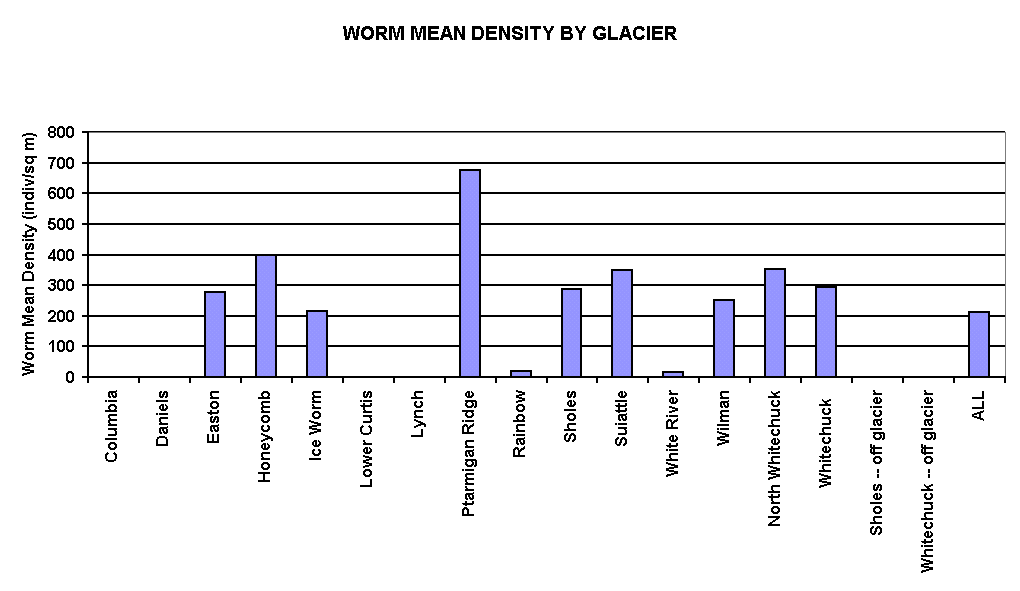Ice Worms and Their Habitats on North Cascade Glaciers
Above Ice Worms in the evening on Sholes Glacier 2010: From 2000-2002 the NCGCP has focused on detailed field studies of ice worms. Ice worms have been observed and collected on 20 different glaciers. From 2003-2021 NCGCP is continuing our examination of ice worm populations in the field. The Ice Worm population did seem to struggle with decreased in snowcover on glaciers from 2003-2005, bare ice possibly not being as conducive an environment. Better snowcover in 2007 and 2008 led to greater populations at least at the surface in our surveys. In 2011 with Marieve Desjardins (Queens University, Kingston, ON) we collected ice worms for a study of the anti-freeze proteins in ice worms. Could these proteins exhibit the right characteristics to be of use in transplant surgeries where keeping an organ cold, without freezing is key. Below is a You Tube video introducing ice worms. Make no mistake their habitat has been shrinking with glacier retreat. This is also a global response to climate change documented glacier by glacier and overall. At right is an image of the start of our sampling period at 7:00 pm August, 8, 2010. There were 3 ice worms/square meter. Below that is the same location at 8:30 pm with 800 ice worms/square meter. The ice worms live only on glaciers and prefer the snowcovered environment. As the snowcover on glaciers is limited in extent and duration that is stressful on ice worms leading to population declines.
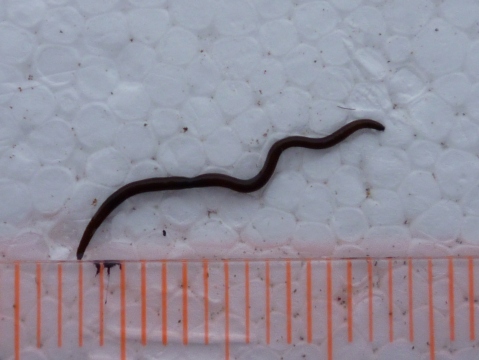
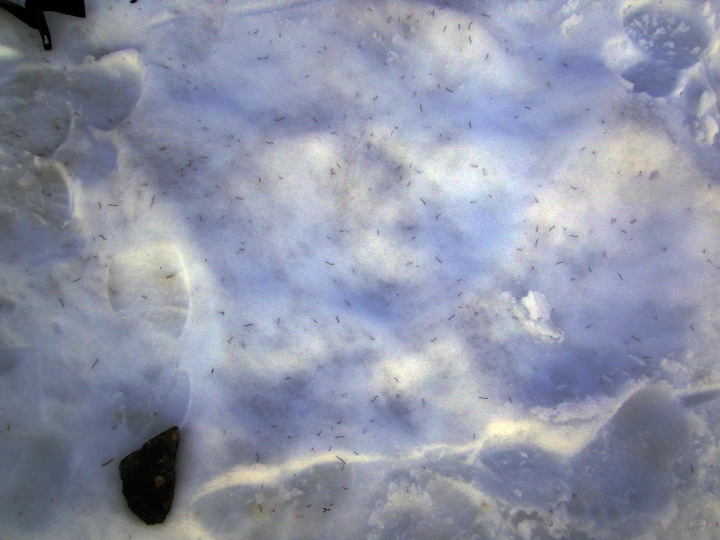
Ice Worms in motion on Sholes Glacier
Ice Worms
Yes, worms really do live in glaciers — in fact, this kind (ice worms) can’t live off of them!! Their scientific name is Mesenchytraeus solifugus (Emery, 1898). They are about 1 cm (1/4″) long, and about 1 mm (1/32″) wide. Glacier ice worms are dark brown to black (although they look red or reddish-brown when they are in water. When you see them on the glacier, they appear as loose pieces of string in the snow or ice (see photographs above). These ice worms are in the class of Oligochates and family of Enchytraeidae, just like earthworms, so are members of Annelida, or segmented worms. There are other worms called ‘ice worms’ that live in ice on the ocean floor, or deep underground, but they are unrelated to glacier ice worms. It is hard to walk in the evening onto the snowpack of a North Cascade glaciers without squashing an ice worm.
Just how many ice worms are there on these glaciers?
On Suiattle Glacier, (photo at left and above) on the south side of Glacier Peak, the recorded mean density was ~2600 ice worms per square meter in 2002. With an area of 2.7 square kilometers, this represents somewhat over 7 BILLION ice worms on this glacier! This is more than the earth’s entire human population on just one glacier. Good thing they do not use many natural resources each. The maximum density more typically is near 300 ice worm/square meter. On Sholes and, Ptarmigan Glacier our annual census is showing a significant decline, likely due to a more limited snowcover duration.. The total population of ice worms must be decreasing as North Cascade glaciers continue to retreat rapidly and even disappear in some cases.
Their Distribution:
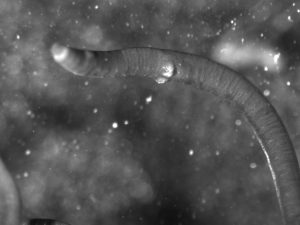
Glacier ice worms inhabit glaciers from southern Alaska’s coastal ranges through the Coast Ranges of British Columbia, the Cascades of Washington to the Three Sisters of Oregon and the Olympic Mountains. The Three Sisters and Mount Hood areas is south of the Cordilleran Ice Sheet limit, indicating that this ice sheet cannot be the only dispersal method for ice worms. It is also noteworthy that ice worms are not found in the interior ranges of British Columbia or in the Rocky Mountains, which is the interior side of the Cordilleran Ice Sheet. The ice worms seem to be associated only with temperate climates. Ice worms are tough too, surviving the Mount Saint Helens eruption in the firnpack of the newly redeveloping glacier on the mountain.
It is also noteworthy that ice worms only inhabit glaciers. In 2003, we sat at the edge of the Sholes Glacier looking at the glacier covered Mt. Baker volcano waiting for the sun to set. After sunset we counted the ice worms on the glacier. There were close to 1000 ice worms per square meter right up to the glacier margin. Because of tremendous snowfall in 1999 and 2000 a substantial snowpack extended over the ridge at the edge of the glacier. By the time we had traveled 10 meters from the edge of the glacier onto this snowpack almost no ice worms existed on the snowpack, within 30 m we could not find a single ice worm. This is true even in cases where the snowpack adjacent to the glacier survived the summer. Thus, ice worms seem to require the multi-year glacier ice for survival. In a location such as the Whitechuck Glacier at right, which is disappearing, the ice worm population will be lost. The entire rocky area pictured was glaciated 60 years ago.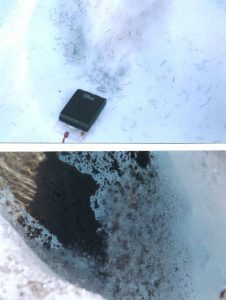
Where do they occur? Glacier ice worms occur only in and on glaciers; you won’t ever see them more than a few meters from the edge of a glacier, so they serve as an excellent indicator of the presence of a glacier ice below the snow. When we performed density counts extending past the edge of a glacier, out onto a snowfield, ice worm density dropped dramatically, with no ice worms appearing more than 10 meters from the edge of the glacier. This suggests that in the course of their daily vertical migrations they are able to sense when they venture into a region of thin snowpack, as well that glacier ice is critical for ice worm survival. What the exact tie is between ice worms and the glacier, we have yet to find out. Equally important, ice worms cannot migrate from glacier to glacier, so that populations are isolated from each other. These populations offer a unique opportunity for testing rates and mechanisms of evolution.
When To Look For Ice Worms
Ice worms avoid direct sunlight, so you will be less likely to see them during the day. They rise to the snow surface on glaciers as the surface becomes shady in the evening. As shown in the table below, they begin to come out after 3pm, depending on the shadiness of the location and the time of year. (The fact that there are no ice worms recorded after 8pm before 7 am is because we weren’t looking then.) Look for ice worms first in the shade created by suncups; later in the evening you will see them virtually cover the surface of glaciers in the North Cascades; they are more dispersed on Alaskan glaciers. Ice worms sometimes occur at densities of 2000 ice worms/square meter and commonly at 300 ice worms/square meter on North Cascades glaciers! They are reported on Alaskan glaciers to occur at densities of 100 to 200 ice worms/square meter.
What Do Ice Worms Eat?
They do eat snow algae, which is available in great quantity in the snow, not limited to the stuff we see as ‘watermelon snow’ (Goodman 1971). Ice worms graze on algae in the snow, as well as bacteria and anything else that is small enough to fit in their mouths (which are tiny indeed). When Goodman dissected ice worms from Alaska, he found symbiotic single-celled creatures residing there; these warrant further investigation. Because there is so much algae and so many ice worms, their role in downstream ecology is probably significant, both in terms of biomass, and in terms of carbon and other nutrient processing. The microbial glacier community that the ice worm relies upon is dominated by unicellular algal species, with some bacteria, fungi, and multi-celled algae. Observed microbial densities average about 1.5 organisms/ul. For a glacier with an area of one square kilometer, average summer runoff is 0.3 cubic meters/second which is 300 liters. Thus, a North Cascade glacier of this size would contribute For a glacier with an outflow of 28 cubic meter/second, a glacier can contribute over 500 milllion organisms/second downstream in the summer!
What Are Ice Worm Habitats?
In the evening and night hours ice worms feed primarily on the surface of snow on glaciers, and to a much less degree, on bare ice. During the day, ice worms hide out beneath the surface of the glacier, avoiding the extreme sunlight of midday. Ice worms have been reported from several centimeters to several meters below the surface of snow on glaciers; they have also been reported as showing up on walls of ice caves tens of meters below the surface. Please let us know how deep you find ice worms! Ice Worms have anti-freeze proteins (AFP) which help keep them from freezing solid. These AFP’s inhibit the growth of ice by lowering the freezing point and coating ice molecules. This facet is seen in other organisms that inhabit cold environments.
Ice worms are often sighted in the glacier meltwater pools, slush, and streams found in or on top of glacier ice, even during the day. It is believed that the water filters the longwave radiation sufficiently for the ice worms to hang out there during bright periods. Ice worms feed in pools and streams, keeping one end hooked in the ice while the other end (apparently the mouth) waves back and forth in the water. They are very successful hanging on even in very fast and turbulent water, but appear feed more often in slow to moderately flowing streams on glaciers.
In still pools, ice worms can be found at extremely high densities either relaxing in muddy sediment on the bottom, or wrapped together in tight, twisting bundles of several to 100+ worms. This bundling activity is probably part of their reproductive cycle, as has been reported for other oligochates. The pool shown in the photo had more than a dozen such writhing bundles on the muddy bottom.
Ice Worm Physiology and Morphology
In 2001-2002 field specimens were collected for lab work at Clark University. Ice worms have curiously few features which appear adapted to their icy habitat. They have the same basic physical structures as earthworms, with few obvious morphological changes. They are similarly segmented, have bundles of setae (hairs) along the bottom for moving, and a mouth pore at one end . As members of the order Enchytraidae, they also have very distinctive penial lobes, which don’t really remind most of us of male genital organs. Perhaps most striking is their dark color, with more melanocytes by far than any other worm; this is obviously an adaptation to protect them from intense UV exposure. Of course, this begs the question as to why, if they have so much pigment to protect them, must they avoid direct sunlight so completely. They also utilize anti-freeze proteins to resist freezing. Dan Shain at Rutgers has examined the metabolism of ice worms. The key finding of particular interest is that adenosine triphosphate (ATP), the energy source for biology, is used differently. In all organisms where this has been examined from algae, bacteria and humans as temperature drops the use of ATP and the cellular level of ATP drops. For ice worms it is just the opposite as temperature drops at least down to 21 F the cellular levels of ATP rise. This indicates in one respect a metabolism increases, which may help explain how they do not freeze, but not how this characteristic developed. We have collected ice worms in recent years for two programs that have investigated their Anti-freeze Protein capacity.
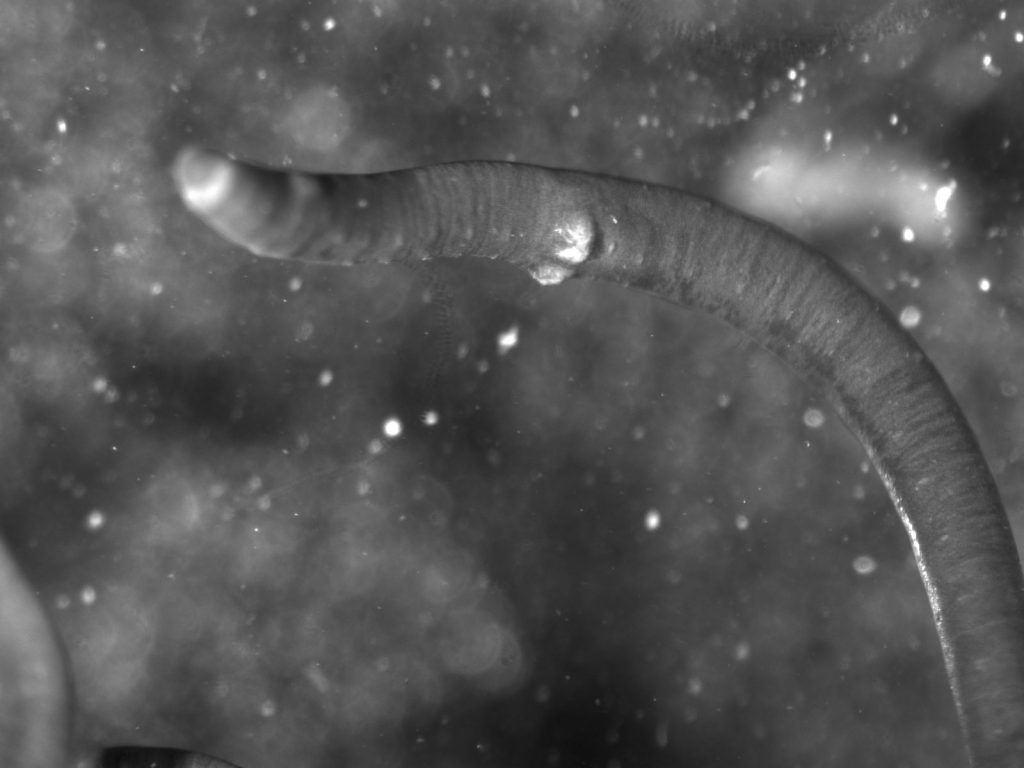
The traditional (morphology-based) classification for glacier worms is:
Kingdom: Animalia
Phylum: Annelida
Class: Clitellata
Subclass: Oligochaeta
Order: Haplotaxida
Suborder: Tubificina
Family: Enchytraeidae
Genus: Mesenchytraeus
Species: solifugus
Distribution and phylogeny of glacier ice worms (Mesenchytraeus solifugus and Mesenchytraeus solifugus rainierensis) 2005; Hartzell, P.; Nghiem, J.; Richio, K.; Shain, D. Canadian Journal of Zoology, Volume 83(9), 1206-1213.
In this recent paper examining ice worms genetic material in part collected by NCGCP and from other regions in the Pacific Northwest revealed the presence of two geographically distinct clades (groups) of ice worms (northern and southern). The northern clade comprises all Alaskan populations, while the southern clade contains British Columbia, Washington State, and Oregon State populations. No evidence of gene flow was detected between these two lineages or between noncontiguous glaciers throughout their geographic range.
Ice worms die at temperatures much more than 10o C, and begin to decompose at temperatures above 20o C. Goodman (1971) suggested that this in part may be due to their acclimation to lower temperatures, and not inherited physiology alone. Very little else is known about ice worm physiology and morphology, so we look forward to learning more about how these critters have adapted to such an extreme environment.
The variation in density from glacier to glacier is shown in the table below. This mean density includes data from all times of the day, including midday when ice worms are nowhere to be seen; they are therefore much lower than the actual density of ice worms. These numbers do provide relative densities. Ptarmigan Ridge’s number is elevated relative to the others because its count did not include any midday hours. Note that the ‘off-glacier’ counts are 0. The dramatic differences between the ice worm heavy glaciers (e.g., Easton, Honeycomb, Sholes, Suiattle), and those glaciers with a relative disparity of ice worms (e.g. Columbia, Daniels, Lower Curtis) needs to be further investigated. Densities in Alaska tend to be much lower than in the North Cascades.
The recent rapid retreat of North Cascade glaciers, a loss of 20-40% of their entire volume since 1984 and the disappearance of 8% of the glaciers we monitor is of great concern. It is certainly altering the alpine habitat. Use the links above to further explore these issues. If you have a specific question you believe is worth our investigating this year.
